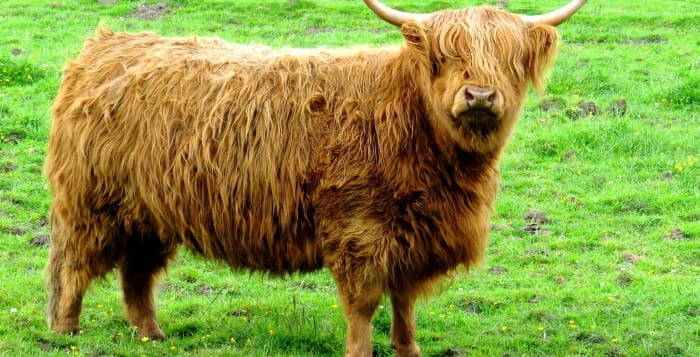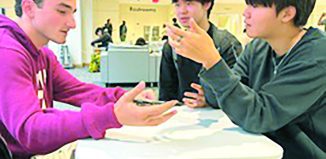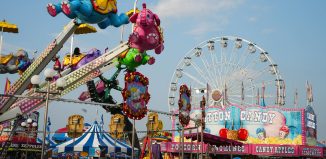Three Village historian takes on Scotland

By Beverly C. Tyler
Scotland is a wonderful, wild and surprising place to visit.
My wife, Barbara, and I spent three days exploring The Trossachs National Park. We stayed in the village of Balloch at a bed-and-breakfast on a farm. George was a dairy farmer who had to sell his herd due to rising costs and lower milk prices. Sheila, his wife ran the B&B, Dumbain Farm, in a beautiful converted building that was the dairy barn.
The first day we drove to Luss, a 19th-century village that used to house slate quarry workers. Recognized as one of Scotland’s loveliest villages it is filled with many original stone cottages strewn with flowers and vines of every color and texture. We took walks around the village and through the farmland and former quarries around it. The paths are beautifully laid out and a delight to walk. We discovered a number of spoil heaps from the slate quarries; these remnants of the slate mining were clearly visible. In the afternoon we took a cruise on Loch Lomond. It was cold and cloudy but the scenery was spectacular.
The only downside was the almost complete lack of commentary. All the information you need to explore the villages, walks, hikes and lochs is on the website www.visitscotland.com.
The next day, Father’s Day (June 21), we drove through the incredibly beautiful Queen Elizabeth Forest Park to Loch Katrine. What superb vistas. We had a wonderful conversation on the loch cruise with a Scottish couple who were biking back from the other end of the lake. We saw a very pretty cottage built for Queen Victoria along the loch bank; she was visiting for the opening of the water supply from Katrine to Glasgow.
Unfortunately her 21-gun salute by the firing of cannons blew out all the cottage windows so she could not stay there.
We had lunch at the restaurant at the pier and dads were free for Father’s Day. We drove to Callander as the sun came out and walked a mile-and-a-half round-trip to Bracklinn Falls.
The water flows over and around gigantic slate stones that form walls around the falls. Along the walk we saw many sheep as well as long-haired Highland cattle, which are well adapted to the harsh climate. We had dinner in the oldest registered licensed pub in Scotland, The Clachan Inn (1734), in the village of Drymen.
The next day we left Dumbain Farm and drove to Glasgow, the largest city in Scotland. We enjoyed the Riverside Museum and the 245-foot barque Glenlee (1896), permanently moored alongside the museum.
The barque has a well done and interesting tour, with information on the 15-man crew and how they fared as seamen over the years on various ships. The Glenlee and thousands of other ships were built here along the River Clyde including the Queen Elizabeth 2, also known as the QE2. The decline of shipbuilding has left Glasgow with only tourism as a riverside industry, but it is now a vibrant city.
We had just time enough in the day to stop at the Kelvingrove Art Gallery and Museum and viewed exhibits on Glasgow’s history, among others. The museum is housed in a most elegant Spanish Baroque building.
Beverly Tyler is the Three Village Historical Society historian.






